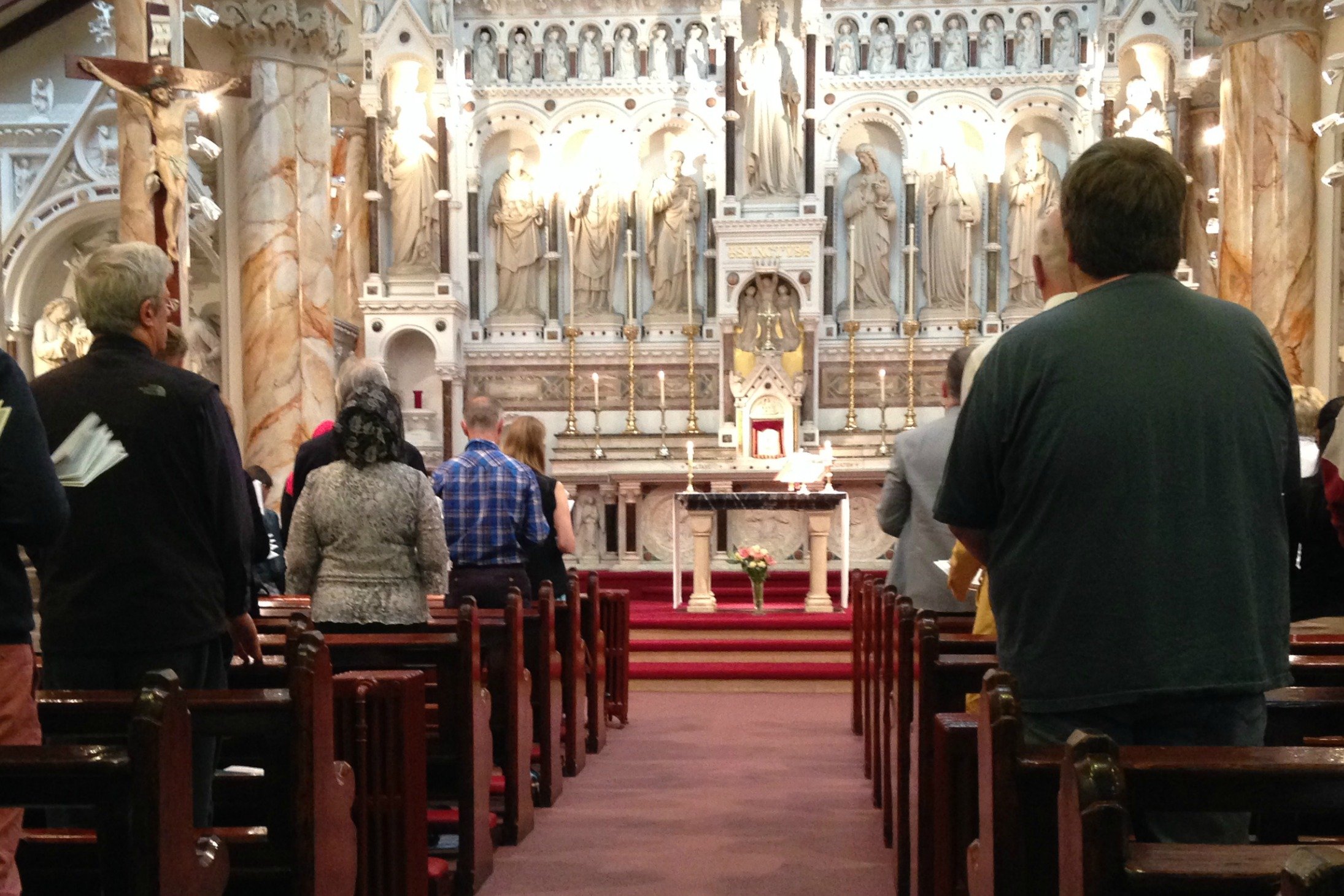Previously in this series: A Theology of Liturgical Evangelization: Part 1, Part 2, Part 3, and Part 4
Earlier in this series I proposed that to do more liturgical evangelization, we need to resist two central distractions: first (as discussed in Part 4) the introduction of any competition between the essential and complementary natures of liturgical life and response to the initial proclamation of salvation in Jesus Christ, and secondly, the temptation to reduce liturgy and/or evangelization to utilitarian tasks and standards. This second temptation rears its head quite often—when we hear, “we need to do such-and-such at Mass so the young people will stop leaving the Church,” or “we need to get serious about evangelization so our parish doesn’t have to merge with another.” This temptation is different than the first in that it is a distraction of busyness, of doing many things (even with excellence and the purest intentions) while creating a false end point, an artificial end state (i.e., persuading young adults not to leave the Church) that falls far short of the dynamic, Spirited power of liturgical evangelization.
The power of “liturgical evangelization” as a unified term is not “an apologetic argument for the liturgy” or evangelization to be taken seriously because of either’s “value in utilitarian terms.”[1] As Aidan Kavanagh, OSB explained with regard to liturgy, “I wish to maintain that Christian worship does not stop with merely stimulating the community of believers. Nor does the stimulation of the community merely aid it to be itself and do its job.”[2] This is not to deny that the liturgical life does indeed enable believers to be Church and do our job as disciples, but to remind us that this is not the sole consequence of doing liturgy. “Christians do not engage in liturgical worship to get grace or inspiration, to indulge in creativity, to become educated in matters ecclesiastical. Nor do they elaborate rite as a style of life to house nostalgia.”[3] Likewise, evangelization (and even more specifically the call for a New Evangelization) is not to be reduced to the discussion and implementation of pastoral practices.[4] Evangelization is not to increase Mass attendance, promote Catholic identity, or increase involvement or engagement in parish life. Instead, as Timothy O’Malley writes, it’s a call to a “transformation of all culture, of all human existence, spurred on by an encounter with Christ himself.”[5] When we say (correctly) that the “Church exists to evangelize,” we’re making a statement of purpose. Yet it is a purpose that transcends our earthly constructs of purpose and goal. Liturgical evangelization is what God has called us to be; it is the identity of participation offered as gift to humanity, not a task.
We can be blinded by our own pedagogical pride when we forget that “the liturgy wishes to teach, but not by means of an artificial system of aim-conscious educational influences; it simply creates an entire spiritual world in which the soul can live according to the requirements of its nature.”[6] The alternative is doing liturgy unleashed to the world, and expecting the palpable signals of a combustible assembly—truly yielding to and embracing the Holy Spirit’s decisive role in both liturgy and evangelization. Signs, miracles, healing, testimony, and witness fill, spur, and accompany the dynamic outward expansion of the worshipping community in the book of Acts, all in the power of the Spirit, as the evangelist Luke so often reminds us.
When we are distracted by incomplete ends or artificial objectives of the liturgy or evangelization, we tend towards smallness. Gabrielle Bibeau reflects that thin debates in liturgy (and I would add, in evangelization as well) are built upon the assumption that “liturgies must be perfect, or at least as close to perfect as possible.”[7] This is an “irrational, Pelagianist quest” that in both liturgy and evangelization can become “an idol that distracts” from the necessity of being supernaturally empowered by the Holy Spirit and doing liturgical evangelization.[8]
Throughout this series, I have been slowly seeking out a theology of liturgical evangelization to understand what it meant that my friends and family overflowed with these comments after a Mass and Baptism:
“All my life I’ve been going to Mass. I’ve always felt like I’m just going through the motions, but this was something different. I’ve never experienced anything like it at Mass.”
“I haven’t felt that much joy at Mass in a long time.”
“I felt like I could be myself.”
“It was like I was praying during the Liturgy of the Word.”
“I never knew so much happens at baptism. It was so involved!”
“I haven’t been that joyful at Mass since my wedding day.”
It was indeed an experience of liturgical evangelization. Combustible disciples doing liturgy overlapped with the doings of the world, and the world noticed. The world asked what happened. The world experienced a shiver of joy unlike typical happiness, or even unlike their previous experiences of liturgy.
In authentic liturgical evangelization lies the work of Christ, the Holy Spirit, and the Church. Yet so much of our doing liturgy and doing evangelization tear apart the glorious fullness due to our tendency to be distracted by placing these different manifestations of the Spirit into competition or overlaying our own small-minded purposes for each. Much of our inherently evangelizing liturgy goes unnoticed because it does not intersect with the world or is not done by disciples ready to be lit ablaze with palpable response.
As I conclude, I’m drawn to a simple verse: “For God so loved the world that he gave his only Son, so that everyone who believes in him may not perish but may have eternal life” (Jn 3:16). This is a picture of liturgical evangelization. Liturgical evangelization begins with God’s loving initiative. It seeks to reach the entire world—unleashed, without boundary or preference. It takes place in and through Jesus—the Messiah, Savior, and Beloved Son of God—and his everlasting presence through the power of the Holy Spirit. It invites a response of belief in a person that is on a different plane than liturgical preference or involvement in parish activities. The response of belief brings us to touch something so powerful, so divine that it ushers in a new life in relationship with the Father through the Son and filled with the Holy Spirit, starting now and stretching to all eternity. In this new eternal life—beginning now and lasting forever—we truly ‘do’ “the World according to divine pleasure.”[9]
![]()
Featured Photo: J.L. Wong; CC BY 2.0
[1] Aidan Kavanagh, OSB, On Liturgical Theology (Collegeville: The Liturgical Press (Pueblo), 1984), 67.
[2] Ibid.
[3] Ibid., 151.
[4] Timothy O’Malley, Liturgy and the New Evangelization: Practicing the Art of Self-Giving Love (Collegeville: The Liturgical Press, 2014), 2.
[5] Ibid.
[6] Romano Guardini, The Spirit of the Liturgy (Notre Dame: University of Notre Dame Press, 1955), 66.
[7] “Liturgy and Perfection” via Millennial Journal (July 9, 2015).
[8] Ibid.
[9] Kavanagh, On Liturgical Theology, 116.



